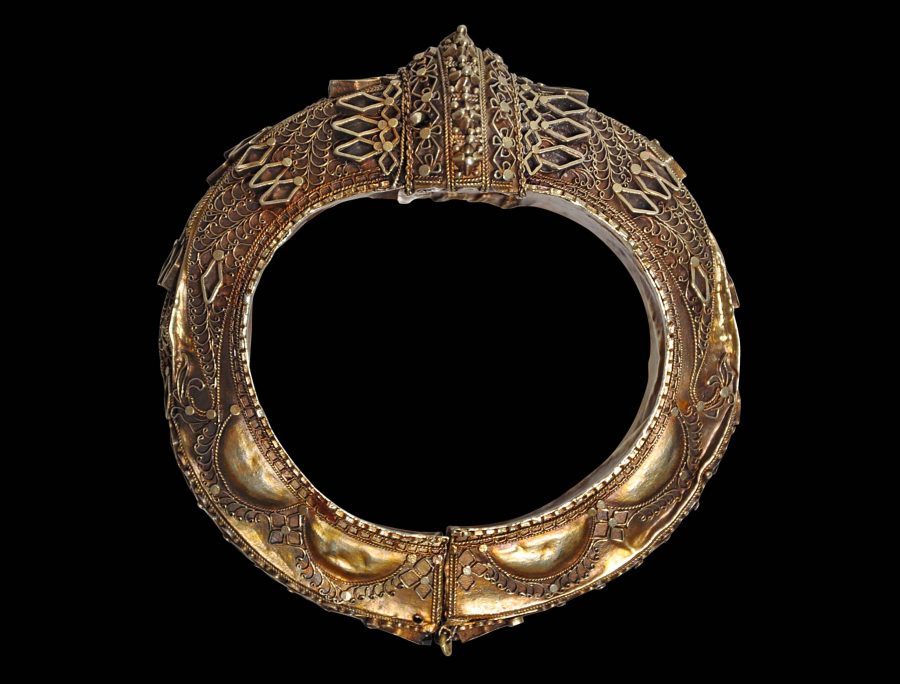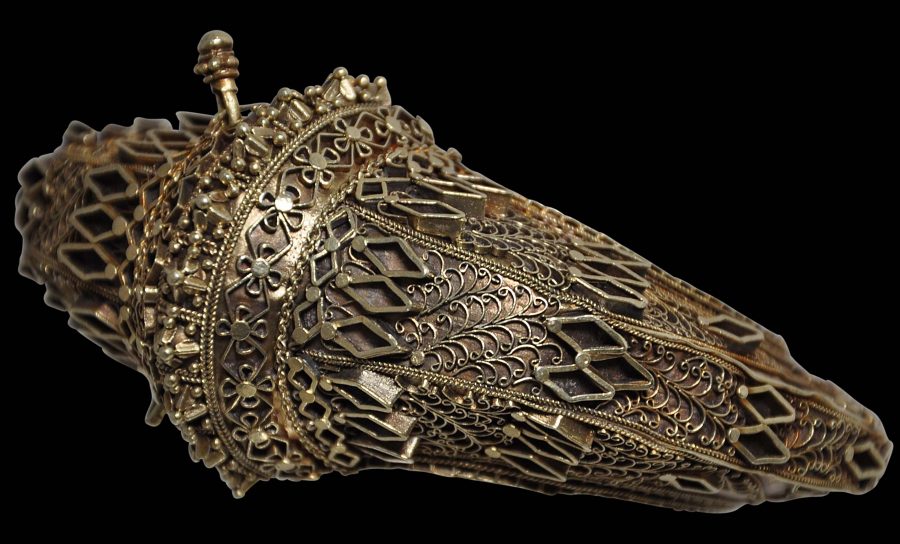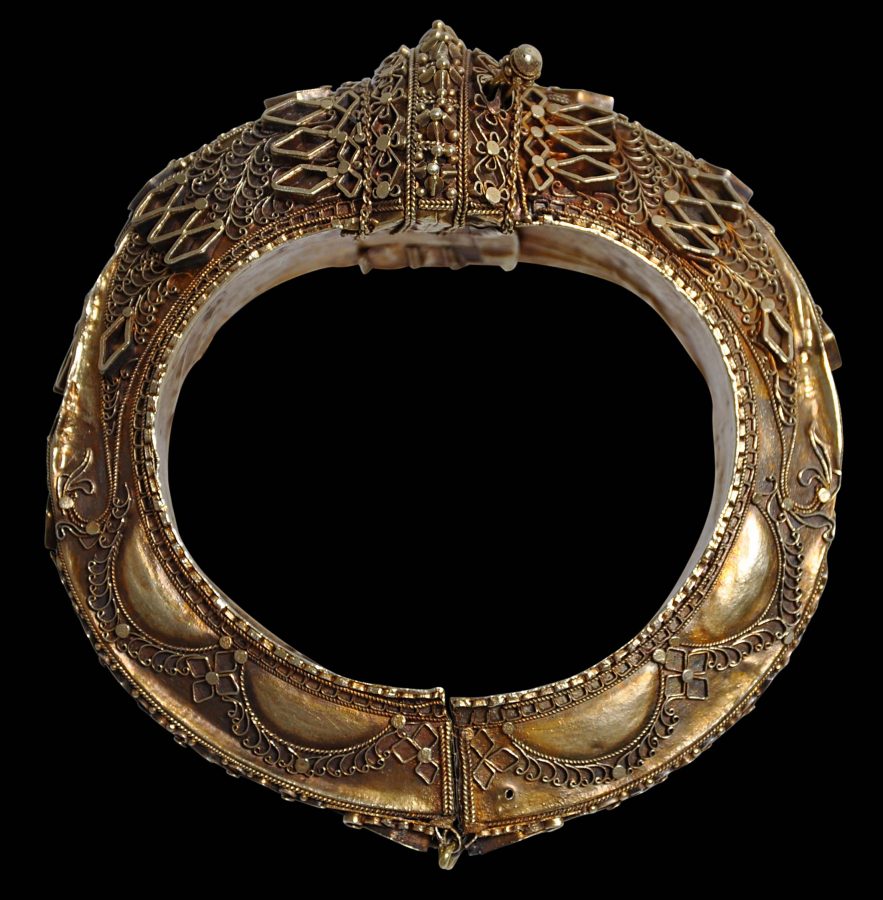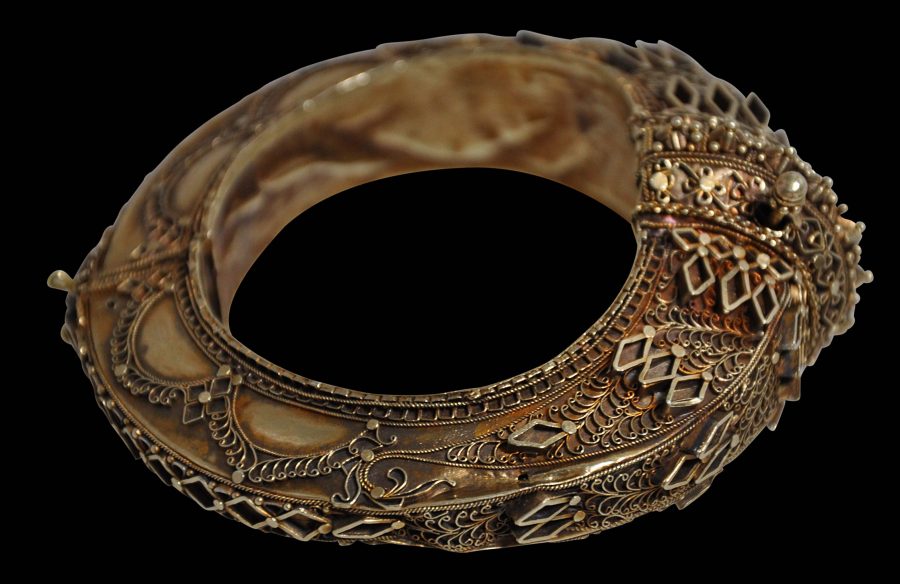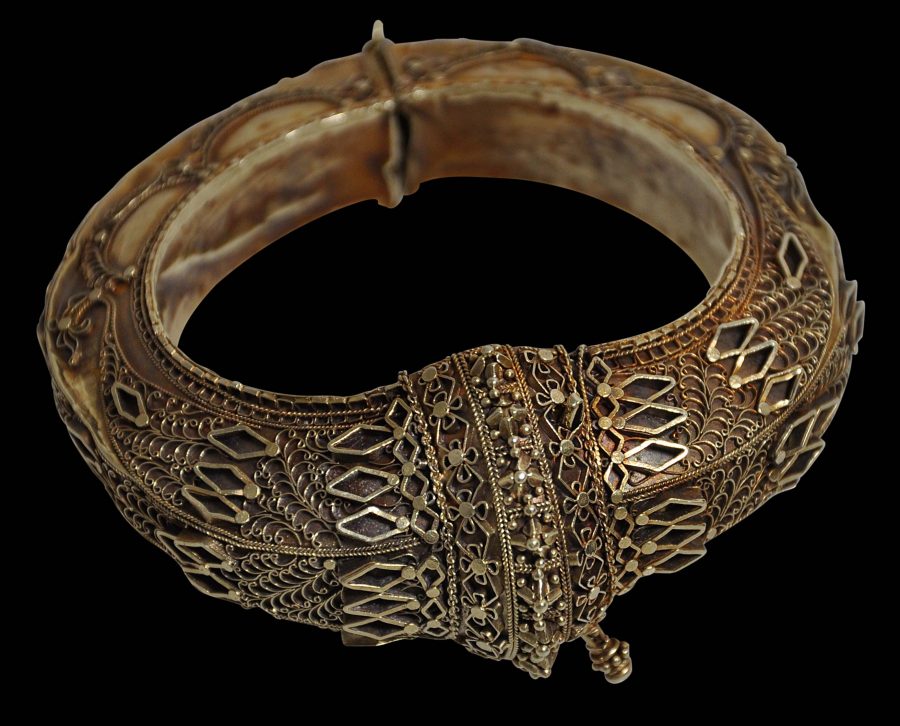This very fine solid gold bracelet is from the Islamic, matrilineal Minangkabau people of West Sumatra. Being matrilineal whereby inheritance and wealth passed from daughter to daughter, by-passing sons, meant that gold jewellery, as a convenient and portable store of wealth, took on even more importance than being merely decorative.
The bracelet is composed of two hollow sections of sheet gold overlaid with gold filigree work, hinged at one end and fastened at the other with a gold pin. The exterior surface is covered in fine filigree, granulation and lozenge-shaped applique work, all in gold. The surface shows evidence of red staining, which was achieved with the aid of tamarind.
See Brinkgreve & Stuart-Fox (2013, p. 83) for a related example. Another similar example is in the Tropenmuseum of The Netherlands.
The gold used in the bracelet is probably 16-18 carats. There are no losses or repairs, but there is some gentle denting. The condition is stable and wearable.
References
Brinkgreve, F., & D.J. Stuart-Fox (eds), Living with Indonesian Art: The Frits Liefkes Collection, Rijksmuseum Volkenkunde, 2013.
Richter, A., & B. Carpenter, Gold Jewellery of the Indonesian Archipelago, Editions Didier Millet, 2012.
Summerfield, A., & J., Walk in Splendor: Ceremonial Dress and the Minangkabau, UCLA Fowler Museum of Cultural History, 1999.


